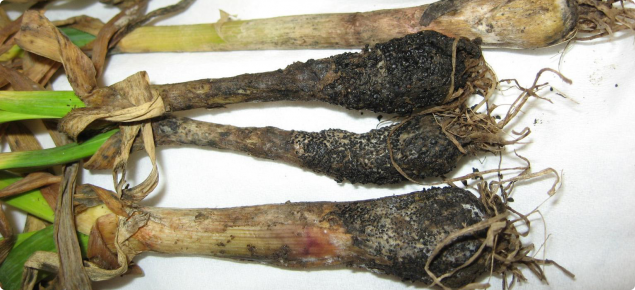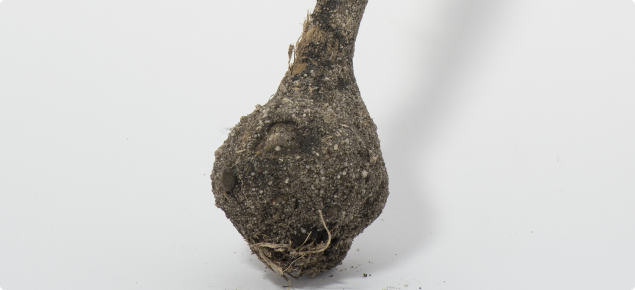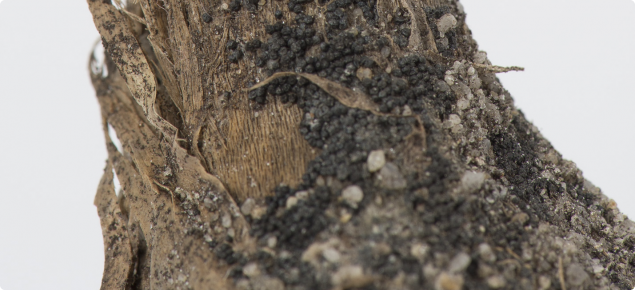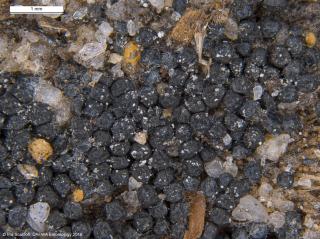Symptoms
White rot usually affects patches of plants, rather than individuals.
It can be difficult to differentiate from other diseases above ground. The disease is more apparent on the bulb itself.
Growers may first notice stunted plant growth, followed by yellowing and death of the outer leaves. If progressed, remaining leaves and the central stem will die, and there will an obvious rotting of the stem above the bulb. In severe cases the bulb will be completely rotten.
Infected plants will pull easily from the soil. The disease manifests as a fluffy white (mycelia) growth on the roots and root plate, with tiny black growths like poppy seeds (sclerotia).
What do I do if I find it?
Infected plants must be immediately removed, along with the surrounding soil, and burned.
White rot sclerotia persist in the soil for many years, surviving through cold winter temperatures. Ensure the implementation of biosecurity measures to prevent further spread.
For backyard gardeners, wash any soil from infected parts of the garden from their footwear and tools before moving to other areas of the property.
Report any suspect signs of white rot to the department’s Pest and Disease Information Service on freecall 1800 084 881 or by emailing info@agric.wa.gov.au.
Alternatively you can download the MyPestGuide reporting app or make an online report at mypestguide.agric.wa.gov.au.
How is it spread?
The little poppy seed growths on the base of infected allium bulbs are called ‘sclerotia’ and these are the means by which the disease spreads. They will drop off infected plants into soil, and will infect any new crops.
The disease can then be spread through the movement of infected planting material, infested soil, plant debris or water.
White rot sclerotia persist in the soil for many years, surviving through cold winter temperatures.
Control options
- Use disease free planting material or grow from clean seeds.
- Do not replant from this year’s crop if disease is present.
- Use crop rotations by planting non-Allium species (no garlic, onion, spring onion, shallots).
- One option for crop rotations is green manure crops with biofumigant activity, such as mustard, that can help prevent the build-up of sclerotia in the soil.
- Registered fungicide treatments are available to protect the roots of growing plants against infection.
- Consider biological control options such as garlic juice, or pre-treating garlic cloves before planting.
- Implement biosecurity practices to prevent the transfer of infected soil or plant materials to other areas of your property/garden. This includes brush down and cleaning of shoes, clothing and equipment.
- For specific information on fungicide treatments contact your local agronomist, consultant or nursery.
For more information on control methods:
- Managing onion white rot in spring onions (Horticulture Australia Limited)
- Garlic diseases: white rot
- How to control onion white rot
Farm biosecurity is important
Commercial and backyard growers are reminded to implement strict biosecurity measures at all times to prevent infection or the spread of potentially contaminated soil and plants. This includes ensuring that any plants purchased are certified as disease free.
To prevent spreading the disease around the garden if present, gardeners should wash any soil from infected parts of the garden off boots and tools before working in other areas.






